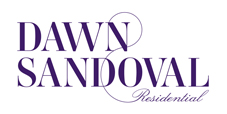 Q. I am starting to explore the option of becoming a landlord, but feel a little daunted at all the factors I need to take into consideration just to get started. Terms like rental yield, as well as how to actually calculate yields to make sure I am making a good business decision phase me completely. Can you help?
Q. I am starting to explore the option of becoming a landlord, but feel a little daunted at all the factors I need to take into consideration just to get started. Terms like rental yield, as well as how to actually calculate yields to make sure I am making a good business decision phase me completely. Can you help?
A. Rental yield is paramount for a successful investor – whether you are buying the property outright or funding the investment with a buy-to-let mortgage. As a landlord, you can make money from your asset in two ways, capital growth – when your property’s value has increased and rental income – the money you receive as rent from your tenant. Many like yourself seem to confuse rental income with rental yield. For a novice it’s an easy mistake, but it’s important to understand the difference. In layman’s terms, rental yield is a measure of the return on a property investment. It is the actual profit made compared to the amount you immediately put into the investment. You should be aware that there are many factors that can have an effect on rental yield. For instance, area differences, property prices, capital appreciation, interest rates, demand growth and the ever changing housing market can all play their part. For instance, if you own a property in London in comparison to say something on the commuter belt, the property can demand a much higher rental price and consequently gain a much higher rental yield. But how do you calculate rental yield exactly? The easiest way is to divide a year’s total rent by the purchase price of a property. However, this would only be the yield if you owned the property outright. If you have a mortgage and other expenses, you can calculate your rental yield like this: – Firstly, calculate the initial investment made by adding together your deposit and any other costs, such as stamp duty. Work out the total mortgage repayments made in a year, take the monthly payment and multiply it by 12. Then calculate how much rent is collected from tenants during the year. Then you can calculate the gross rental income: annual rent collected – annual mortgage repayment = gross rental income. You then have to deduct costs (insurance, maintenance, void periods, and repairs) to get the net rental income. You can then calculate the net rental yield: net rental income / initial investment figure x 100 = net rental yield. Typically, in the first few years the mortgage payments may be higher than the rental yield. But over time, if the investment was well-made, there should be both capital growth and a healthy rental yield.









